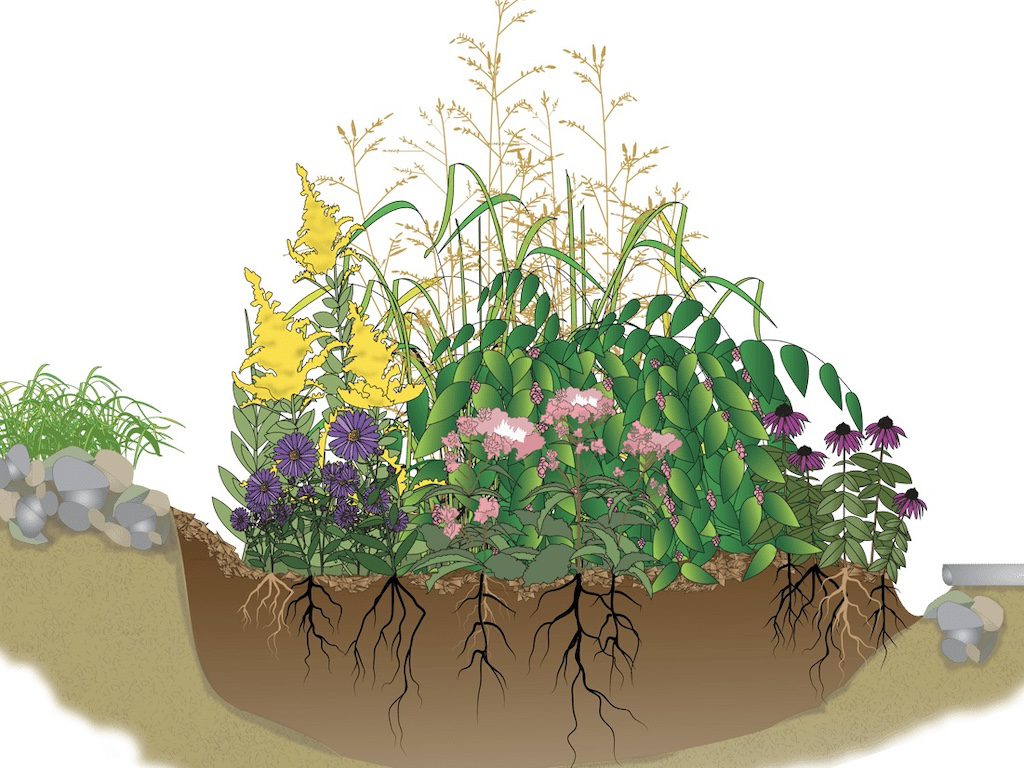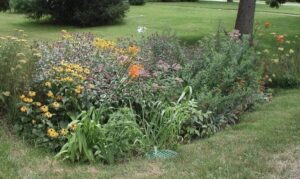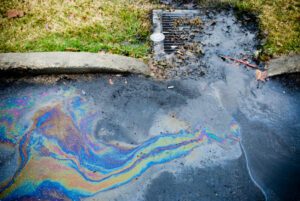Issue 10 | March 2024 | Rain Gardens & Their Benefits

By Debi Cruse, Guest Writer

A rain garden is an area of native shrubs, perennials, and flowers planted in a small depression to temporarily hold and soak in rain water runoff. A rain garden is dry most of the time and typically only holds water during and after a rainfall. Rain gardens allow more water to soak into the ground than a conventional lawn.
Rain gardens offer many benefits to the Chesapeake Bay watershed, playing a vital role in addressing environmental challenges specific to this region. They offer a pleasant way to enjoy contributing to the health of the Bay.

The Chesapeake Bay has long faced issues with nutrient pollution from excess nitrogen and phosphorus entering the waterways. Sediment runoff is also a significant concern due to its impact on water clarity and aquatic ecosystems. Oils, metals, and chemicals get washed into waterways during heavy storms because hard surfaces, such as driveways, sidewalks, roofs, and roads, prevent rainwater from being absorbed into the earth.
Plants and soil in rain gardens act as natural filters and barriers, capturing and absorbing runoff from urban and suburban areas before it reaches the Bay. This helps reduce nutrient loads, preventing the growth of harmful algae and improving water quality.
Rain gardens planted with native vegetation offer an extra level of benefits by providing habitats for local wildlife. The presence of native plants in rain gardens attract pollinators, birds, and other wildlife which contribute to the overall biodiversity of the region.
During intense storms and heavy rainfall, rain gardens help manage stormwater by capturing and slowing its flow. This not only reduces the risk of flooding, but also protects other nearby bodies of water from erosion.
The Chesapeake Bay Watershed is subject to environmental regulations aimed at reducing pollution and improving water quality. Rain gardens offer a practical and aesthetically pleasing solution for property owners to meet stormwater management requirements.
Residents can actively participate in sustainable stormwater management practices while learning about the connection between their actions and the health of the Chesapeake Bay. Community involvement is essential for the long-term success of conservation efforts in the watershed. By incorporating rain gardens into landscaping, individuals and communities contribute to the collective efforts to protect and restore the health of the Chesapeake Bay and its surrounding ecosystems.
The University of Maryland Extension Office offers guidance for creating a rain garden which includes:
Step 1: Assess Your Property by Taking a Walk in the Rain Step 2: Assess Your Soil Step 3: Size Your Rain Garden Step 4: Planting Plan Step 5: Installing Your Rain Garden Step 6: Plant and Mulch Your Rain Garden Step 7: Maintenance
See their full online tutorial on creating a rain garden here, and for additional information and resources, see their Bay-Wise Program.

